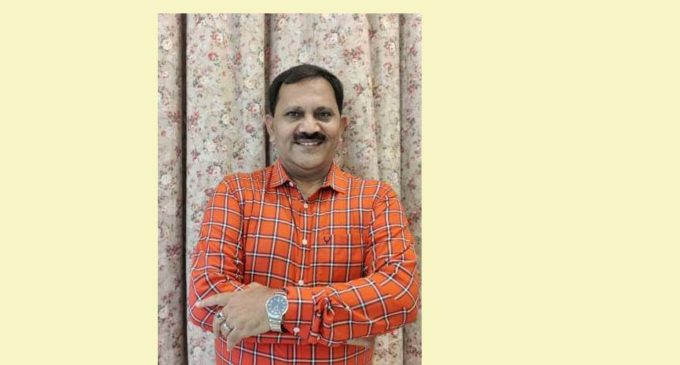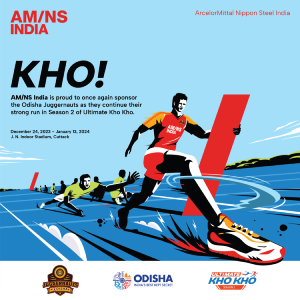Dr A. P.J. Abdul Kalam was well known as Missile Man

By Er Taraprasad Mishra
APJ Abdul Kalam is a famous name in the whole world. He is counted among the greatest scientists of the 21st century. Even more, he becomes the 11th president of India and served his country. He was the most valued person of the country as his contribution as a scientist and as a president is beyond compare. Dr A. P.J. Abdul Kalam was well known as Missile Man, for making various missiles like Agni and Prithvi for India. He is popularly known as ‘President of the people’ in Janasadharan. His full name was Avul Pakir Jainullabdin Abdul Kalam. He was the 11th President of India. He was born in Rameswaram region of Tamil Nadu in a poor Muslim family on October 15, 1931, at the home of Jainullabdin and Aashiyamma. After getting graduation degree from St. Joseph’s College 1954 and In early age, Dr Kalam started supporting his family financially. Dr worked as a scientist in Defense Research and Development Organization also known as DRDO. At DRDO he designed a helicopter for Indian army. He also worked under Dr Vikramsarabhai as a part of the ‘Incospar’ committee. Later, Kalam Saheb joined the Indian Space Research Organization in 1969 as the Project Director of India’s first indigenous satellite missile (SLV-III). Dr Abdul Kalam will be known as the “Missile Man of India” forever due to his great contribution given for the development of ballistic missiles in India. He also played an important role in the successful Pokharan-II nuclear test of 1998. In 1958, Dr Kalam joined DRDO as a senior scientific assistant where he led a small to for the development of a hovercraft. Due to the lack of encouraging results from the Hovercraft program, he joined the Indian Space Research Organization (ISRO). He is known throughout India as the “Missile Man of India” because he has contributed immensely in the development of ballistic missile and space rocket technology. He was the driving force behind the development of defence technology in the country. His great contribution gave the country an opportunity to stand in a group of nuclear nations. Dr Kalam was born on 15 October 1931 in the house of Zainullabdin and Aashiyamma. Due to the poor financial condition of his family, he started helping financially in his early ages. However, he never gave up his studies. After his graduation from St. Joseph’s College in 1954 from Tiruchirappalli and AE from MIT. After graduation, Kalam joined the DRDO as a Chief Scientist, although he was soon displaced to the Indian Space Research Organization as the Project Director for India’s first indigenous satellite missile. Dr Kalam also served as the Chief Executive of the Guided Missile Development Program which involved the simultaneous development of vibration of missiles. Dr Kalam also became the Chief Scientific Adviser to the Prime Minister and Secretary of DRDO from the year 1992 to the year 1999. After his successful contribution as the main project coordinator for Pokhran II nuclear test, he came to be called “Missile Man of India”. He was the first scientist who was the President of India from the year 2002 to 2007 without any political background.
Abdul’s father’s name was Jainulabdeen and he was the owner of a boat in a local mosque. His mother’s name was Ashiamma and she was a housewife. Abdul had four more siblings and he is the youngest among five of them. Their names are Mohammed Muthu Meera Lebbai Maraikayar, Mustafa Kalam, Kasim Mohammed and a sister named Asim Zohra. His ancestors had a lot of wealth and a lot of properties. His family was used to be mainly a common trader between the mainland of Srilanka to other islands such as Pamban Island. So the title “Mara Kalam Iyakkivar” and “Marakier” was given to his family. But the time near 1920 his family business was failed and they lost most of the wealth. By the time Abdul Kalam was born their family was in a very bad state. Kalam was very serious and hardworking in his study life, He had learning desire in him as described by his school teachers. He pursued his matriculation form a higher secondary school in Ramanathapuram named Schwartz Higher Secondary School. In the year of 1955, he became a physics graduate from Saint Joseph’s College in Tiruchirappalli. After that, he went to Madras for further study, from Madras Institute of Technology he did his aerospace engineering. His dream of becoming a fighter pilot cold not fulfilled as there were only eight positions available in IAF and he came at the ninth place. After graduation, he became a member of the “Defence Research and Development Service” and joined the “Aeronautical Development Establishment” as a scientist. Kalam did a lot for our country whether as a president or a scientist. When he was a part of the “INCOSPAR” committee, He has worked under the space scientist named Vikram Sarabhai. In 1969 Kalam was transferred to ISRO (Indian Space Research Organization). The project Satellite Launch Vehicle (SLV-III) which was the country’s one of the important project was led by Abdul Kalam, He was the head of the project. “Rohini” satellite was launched by SLV-III successfully near-earth orbit under Kalam’s leadership in July 1980. “Project Valiant” and “Project Devil” in 1970 were not successful but “Project Devil” played a huge role in the foundation of “Prithvi Missile” in 1980. He became the lead in the “Integrated Guided Missile Development program” (IGMDP) for which he had to become the chief of DRDO in 1983. Prithvi and Agni were developed by him under this mission. He achieved one of the biggest successes in his life in May 1998, In “Pokhran-II” nuclear tests by India, he played an important role and lead the team. He became a national hero after the success of the tests and his popularity increased. NDA (National Democratic Alliance) chose Kalam as the presidential nominee of India in 2002 and later he became the President. He served 5 years as president till 25th July 2007, he became the 11th president of India. During his time of president, he had a different work style and a very good connection with people, especially youth. That’s why he was called “The people’s President”. According to the man himself, signing the “Office of Profit Bill” was the most difficult job in his tenure. He had to face many criticisms for some decisions he made. He came into controversy when he recommended the president’s rule in Bihar. Another time he faced criticism when he did not take any action on mercy petitions, he only signed 1 of 21 mercy petitions.
bdul Kalam became a visiting professor after the time end of his presidential era. He became a visiting professor at the “Indian Institute of Management” (IIM) Ahmadabad, “Indian Institute of Management (IIM) Indore, “Indian Institute of Management” (IIM) Shillong. At Anna University he becomes a professor of Aerospace Engineering also he taught information technology. He served many years in the “Indian Institute of Information technology” (IISc) both Bangalore and Thiruvananthapuram. He also taught Information technology at the “International Institute of Information Technology” (IIIT) Hyderabad and Bananas Hindu University. He shared his knowledge in many other academic instate all over India. A program was launched for youth by Kalam to defeat corruption and bring efficiency which was named “What Can I Give Movement” in 2012. Kalam was awarded many awards in his whole lifetime. In the year 1981, he was awarded “Padma Bhusan” which is the third-highest civilian reward in the Republic of India. Then in 1990, He was awarded Padma Vivushan which is the second-highest civilian reward in the Republic of India. In the year 1997 government of India awarded Abdul Kalam the “Bharat Ratna” which is a highest civilian award of the Republic of India and also in the same year he got awarded the “Indira Gandhi Award for National Integration” by “Indian National Congress” which is given after the name of former president Indira Gandhi. Following the next year in 1998, he won the “Veer Savarkar Award”. Then in the year 2000, he won the award “Ramanujan Award” by SASTRA (Shanmugha Arts, Science, Technology and Research Academy). He won the British award “King Charles II Medal” in the year 2007, for the contribution to scientific advances in India. In the year 2009 he was awarded the “HooAbdul Kalam was really a true legend for the youngsters of the country. He has inspired the new generation of the country through his whole life, career, workings and writings.ver Medal”, it is an American prize given to outstanding persons with extra-career services.






